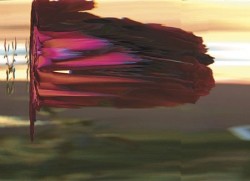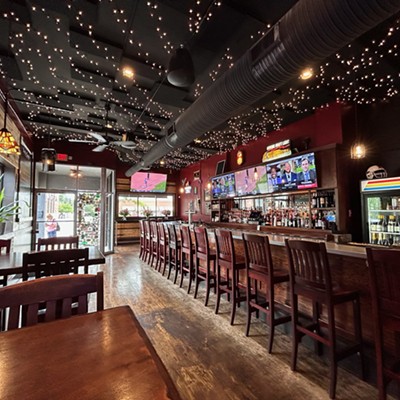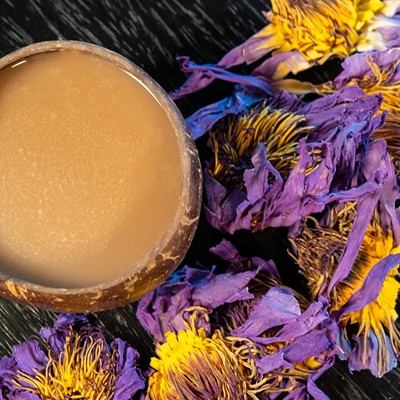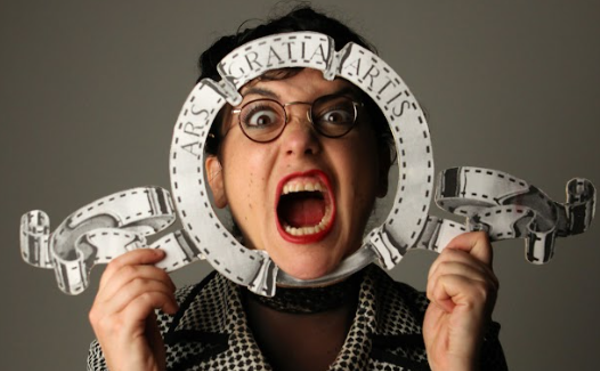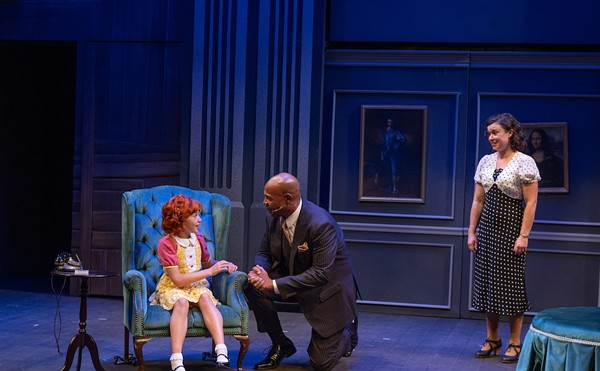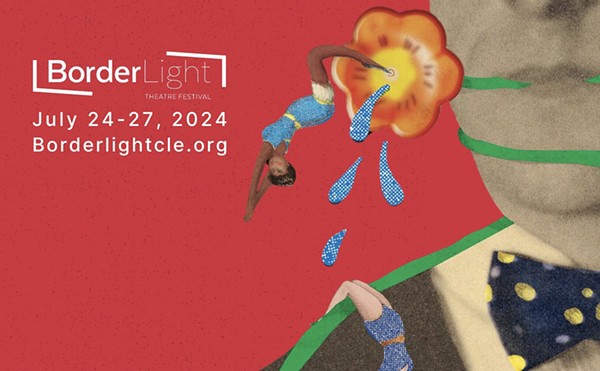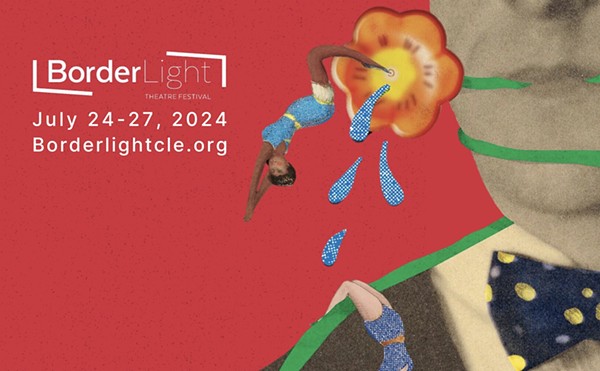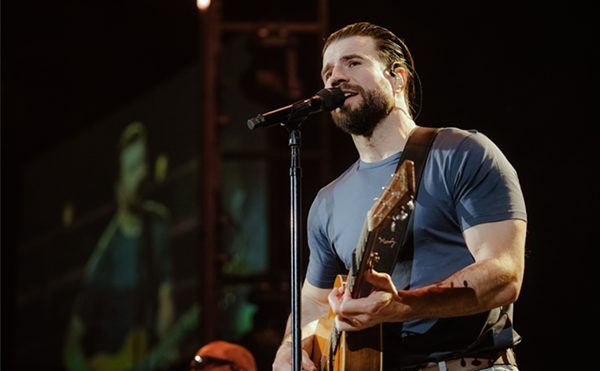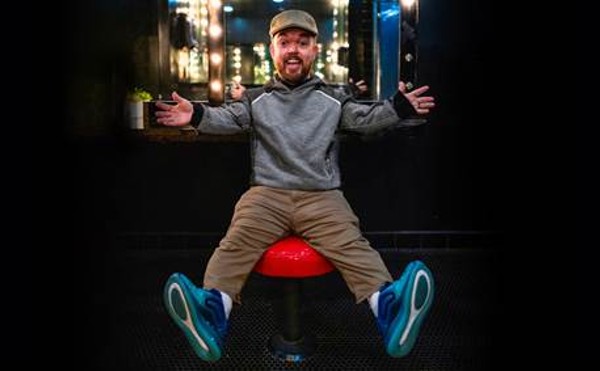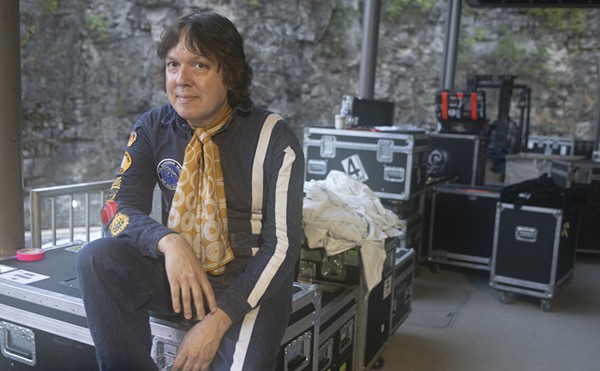"Rose is a rose is a rose is a rose," famously chanted Gertrude Stein in her 1913 poem "Sacred Emily." Elsewhere, Stein explained that she liked simplicity, "but simplicity produced by complication." She could have been talking about so-called camera-less photography, especially as it begins to be practiced now in the digital age. Practitioners of that oxymoronic-sounding art sometimes combine high-tech computer equipment with cardboard and duct tape, producing images that seem to bend back toward a real, rose-like (or at least Gertrude Stein-like) reality.
"Camera obscura" literally means "dark room," referring to the interior of the camera itself. But since photography's inception nearly two centuries ago, various dissenters have preferred to work as directly with light-sensitive materials as possible. Investigators as different as the British botanist Anna Atkins in the 1840s, and early modernist fine-arts innovators like Moholy-Nagy, Man Ray and even Picasso in the early decades of the 20th century explored the effects of placing objects on photo-sensitive paper.
Exposed to light and then fixed with chemicals like any other photograph, these produced enduring, precise shadows that were part picture, part imprint. Although it was known in the beginning as "photogenic drawing," the enduring fascination of the photogram is that it depends on proximity to produce what is really a souvenir of reality, rather than an image. In a way it is photography's opposite, or least its shadow - an un-reproducible object in its own right, like a piece of developed film rather than a print.
Throughout his career, Cleveland-based photographer Bruce Checefsky has experimented with ideas that date back to photography's invention, touching base with its source points, but also making an end-run around history. Over the past two decades he has layered all kinds of often-obscure objects to make large-scale photograms that seem like products of an alternate, retro-future - like photos that might decorate an apartment in Terry Gilliam's movie Brazil. Checefsky has a sculptor-like attraction to real, solidly three-dimensional things, as well as a cinematographer's taste for events (he also makes films), collecting and stacking the shadows of objects and processes. In one series of photograms from the late 1990s, he recorded the sudden flare and destruction caused by matches dropped on photosensitive paper: starry nights mixed with the dark joy of willful damage. His work has been shown extensively in New York and Europe, and can be found in the collections of many major museums, including MoMA, the Whitney Museum of American Art and the Cleveland Museum of Art.
Checefsky's Gardens, currently on view at Shaheen Gallery, is an exhibit of 15 16-by-20-inch chromogenic digital scanner prints, pictures of Checefsky's Tremont garden made with a souped-up flatbed scanner. I don't know whether the artist literally used cardboard and duct tape to enhance his machine - as several other experimenters with this medium have done - but a long extension cord and an essentially low-tech mindset are definitely part of the equipment. The resulting photos might best be described as alternative, rather than camera-less, since, unlike photograms, they depend upon optical and digital technology, and, of course, can be produced in an edition of any size. All the same, a picture like Checefsky's "Trapaeolum, Nasturtium, Ipomoea" (2008) has a truly weird feeling about it. Something is just wrong. Artificial-seeming, anemic colors, coupled with the very limited depth of field capabilities of a scanner, produce an image that looks like a snapshot taken in the heavy, ammonia-based atmosphere of an alien moon. Pale green stems press forward like creatures rubbing against the glass of an aquarium, while, beyond, an empurpled horizon dimly billows past. "Tritoma" (2008) is less eerie because it's more brightly lit, though it's equally puzzling. We might recognize the familiar, conifer-shaped species without the title, but the context is indecipherable. Where is this flower, and how large is it? It stands tall at the margin of what might be a golden-striped ocean. More than an alien place, it seems like the view of an alien eye.
"Rose" (2008) is easily the most dramatic work on view. Richer than in any of the other photos, the reds of the flower flow from a single vertical meridian, like a banner streaming from a pole. The rose repeats itself in a continuous surge, moving across a field of green, its upper half backlit by an orange-tinted sky. Largely abstract, the image is powerfully beautiful.
Though not quite literally camera-less, Checefsky's garden studies at least feel something like photograms - and not just because he revisits the subject matter of Anna Atkins' early cyanotypes. The scanner seems to reach out and grab the things in front of it; not depicting them and slinking away, but pulling them toward its wide, clear, rectangular face as if to eat them. If any of the flat screens that dominate our new world were to develop visual sentience, no doubt it would be like this. Or, even more frighteningly, maybe this is already the secret reality of our own once-human view, as we increasingly consume rather than see a world stretched and distorted, averaged and improved by digital and mechanical parameters.

